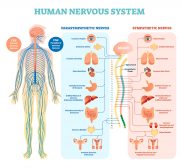Fang
1. (Science: zoology) The tusk of an animal, by which the prey is seized and held or torn; a long pointed tooth; especially, one of the usually erectile, venomous teeth of serpents. Also, one of the falcers of a spider. Since i am a dog, beware my fangs. (Shak)
2. Any shoot or other thing by which hold is taken. The protuberant fangs of the yucca. (Evelyn)
3. (Science: anatomy) The root, or one of the branches of the root, of a tooth. See tooth.
4. (Science: chemical) a niche in the side of an adit or shaft, for an air course.
5. (Science: mechanics) a projecting tooth or prong, as in a part of a lock, or the plate of a belt clamp, or the end of a tool, as a chisel, where it enters the handle.
6. The valve of a pump box. A bend or loop of a rope. In a fang, fast entangled. To lose the fang, said of a pump when the water has gone out; hence: to fang a pump, to supply it with the water necessary to make it operate.
Origin: From fang,; cf. As. Fang a taking, booty, g. Fang.
Dictionary > Fangs
You will also like...

Meiosis and Alternation of Generations
Plants are characterized by having alternation of generations in their life cycles. This tutorial is a review of plant m..

The Human Nervous System
The nervous system is essentially a biological information highway. This tutorial gives an overview of the nervous syste..

Population Regulation in an Ecosystem
With regard to the population size of a species and what factors may affect them, two factors have been defined. They ar..

Animal Growth Hormones
Hormones are produced in the endocrine glands of animals. The pituitary gland and hypothalamus are the most impor..

Homeostatic Mechanisms and Cellular Communication
Homeostasis is the relatively stable conditions of the internal environment that result from compensatory regulatory res..

Roots
This study guide tackles plant roots in greater detail. It delves into the development of plant roots, the root structur..

